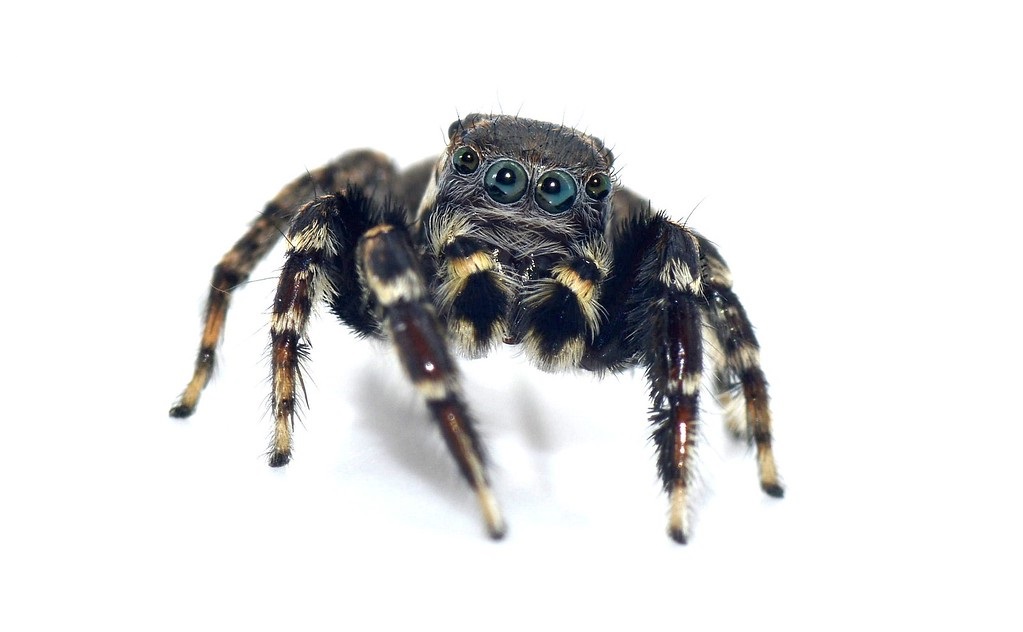Media Release
From: Queensland MuseumStunning new spiders jump into the hearts of scientists
They are the colourful and stunning spiders that are changing the reputation of arachnids around the world, but little is known about jumping spiders; something Queensland Museum scientists are working to change, with the discovery of five new species.
Queensland Museum arachnologist, Dr Barbara Baehr, along with colleagues Joseph Schubert from Monash University and Dr Danilo Harms from University of Hamburg recently described the new Australian species which feature vibrant colours and perform fascinating dance rituals.
Dr Barbara Baehr said while these brushed jumping spiders, are beautiful like their peacock spider relatives which are widely documented, they are often undescribed as a species.
“Jumping spiders are among some of the most beautiful spiders in Australia, yet almost nothing is known about their diversity and taxonomic identity,” Dr Baehr said.
“These tiny spiders are quick to capture the hearts of the public and naturalists. Because of their attractive colours they are widely photographed and feature heavily in social media, but many museums hold very few actual specimens.”
Four of the five new species are from Queensland and one is from New South Wales and at only a few millimetres, they can be difficult to spot, despite their stunning colours.
Queensland Museum CEO Dr Jim Thompson said four of the five species were already part of Queensland Museum’s State Collection and were waiting to be described.
“While there is important field work happening every day, it’s important to note that our State Collection is also treasure trove of new species that have been collected over the years and are waiting to be officially described,” Dr Thompson said.
“These vibrant spiders provide an opportunity for citizen scientists and naturalists to work with institutions, like Queensland Museum, to assist with documenting and enriching our knowledge of our state’s biodiversity.
“By working together our scientists could match the specimens in our collection to the live photos to assist with the description of these new species of spiders.”
The spiders are known as Brushed Jumping Spiders due to the elaborate mating dance of the males, which involves a brush of long and often colourful setae on their legs (like butterflies).
Joseph Schubert said the colour patterns in the males are species-specific and range from black and white combinations to extremely colourful morphs featuring iridescent turquoise and orange patterns.
“The males perform unique dance rituals with their brilliantly decorated first pair of legs to attract females,” Mr Schubert said.
“These five new species are close relatives of the Australian peacock spiders which also perform courtship dances for females. This courtship behaviour makes them a crowd favourite and has popularised jumping spiders worldwide.”
In a true fashion show of nature, the team of scientists paid homage to the late fashion icon Karl Lagerfeld, by naming a spider in his honour.
Dr Danilo Harms, said the Karl Lagerfeld spider had a distinct look that was reminiscent of the late fashion designer.
“Jotus karllagerfeldi is a black and white spider which we looked at and instantly thought of Karl Lagerfeld and his signature look, as the spider has large black eyes, which reminded us of sunglasses and its black and white front legs were reminiscent of Lagerfeld’s kent collar,” he said.
Through the paper, which was recently published in Evolutionary Systematics, the team of scientists hope the foundation is laid for more comprehensive studies on the behaviour and biology of the stunning spider species.
The new species are:
Jotus albimanus – White-handed Brushed Jumping Spider
Found: New England National Park, New South Wales
Jotus fortiniae (Pictured above left, image by Robert Whyte)
Found: Cape York Peninsula, Quinkan Country, Queensland
Jotus karllagerfeldi - Karl Lagerfeld’s Jumping Spider (Pictured right above, image by Mark Newton)
Found: Lake Broadwater via Dalby, Queensland
Jotus moonensis - Mount Moon Brushed Jumping Spider
Found: Mount Moon, Queensland
Jotus newtoni - Mark Newton’s Brushed Jumping Spider
Found: Lake Broadwater via Dalby, Queensland
Queensland Museum’s Dr Barbara Baehr is available for interviews; please contact Christine Robertson from the Queensland Museum media team to arrange.




